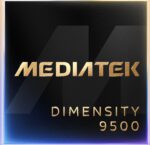When I first heard about GenAI on mobile platforms – from Arm, Qualcomm and others – I confess I was skeptical. Surely there wouldn’t be enough capacity or performance to deliver more than a proof of concept? But Arm, and I’m sure others, have been working hard to demonstrate this is more than a party trick. It doesn’t hurt that foundation… Read More
Artificial Intelligence
The Impact of AI on Semiconductor Startups
At the AI Infra Summit 2025 was a panel conversation that captured the semiconductor industry’s anxieties and hopes. The session, titled “The Impact of AI on Semiconductor Startups,” examined how artificial intelligence is transforming not just what chips can do, but how we design them.
The backdrop is stark. Developing a leading-edge… Read More
MediaTek Dimensity 9500 Unleashes Best-in-Class Performance, AI Experiences, and Power Efficiency for the Next Generation of Mobile Devices
In a bold move to dominate the premium mobile chipset market, MediaTek unveiled the Dimensity 9500 on September 22, 2025, from Shenzhen, China. This flagship SoC promises to elevate 5G smartphones with unparalleled performance, on-device AI capabilities, and energy efficiency, positioning MediaTek as the undisputed leader… Read More
Video EP10: An Overview of Mach42’s AI Platform with Brett Larder
In this episode of the Semiconductor Insiders video series, Dan is joined by Brett Larder, co-founder and CTO at March42. Brett explains what March42’s AI technology can do and the benefits of using the platform to quickly analyze designs to find areas that may be out of spec and require more work. He describes the way Mach42… Read More
Eric Xu’s Keynote at Huawei Connect 2025: Redefining AI Infrastructure
At Huawei Connect 2025, held in Shanghai, Eric Xu, the Rotating Chairman of Huawei, delivered a keynote speech that laid out the company’s ambitious roadmap for AI infrastructure, computing power, and ecosystem development. His speech reflected Huawei’s growing focus on building high-performance systems that can support… Read More
SiFive Launches Second-Generation Intelligence Family of RISC-V Cores
SiFive, founded by the original creators of the RISC-V instruction set, has become the leading independent supplier of RISC-V processor IP. More than two billion devices already incorporate SiFive designs, ranging from camera controllers and SSDs to smartphones and automotive systems. The company no longer sells its own chips,… Read More
AI Revives Chipmaking as Tech’s Core Engine
A century ago, 391 San Antonio Road in Mountain View, California, housed an apricot-packing shed. Today, it’s marked by sculptures of diodes and a transistor, commemorating the 1956 founding of Shockley Semiconductor Laboratory—the birthplace of Silicon Valley. William Shockley, co-inventor of the transistor, aimed… Read More
The IO Hub: An Emerging Pattern for System Connectivity in Chiplet-Based Designs
In chiplet-based design we continue the march of Moore’s Law by scaling what we can put in a semiconductor package beyond the boundaries of what we can build on a single die. This style is already gaining traction in AI applications, high performance computing, and automotive, each of which aims to scale out to highly integrated … Read More
MediaTek Develops Chip Utilizing TSMC’s 2nm Process, Achieving Milestones in Performance and Power Efficiency
MediaTek’s first chipset using 2nm technology expected in late 2026
MediaTek, a global leader in fabless semiconductor design, has announced a groundbreaking achievement in its partnership with TSMC. The company has successfully developed a flagship system-on-chip (SoC) utilizing TSMC’s cutting-edge 2nm process technology,… Read More
Synopsys Announces Expanding AI Capabilities and EDA AI Leadership
In the fast-paced semiconductor industry Synopsys has redefined EDA with its Synopsys.ai Copilot, a generative AI tool. Since its launch in November 2023, and yes I was at the launch and very skeptical, Copilot has evolved to address the industry’s growing design complexity and projected 15-30% workforce gap by 2030. Let’s… Read More











Website Developers May Have Most to Fear From AI